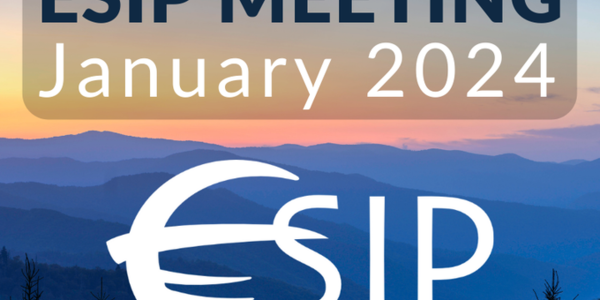Young scientists support climate research in Brazil and the Sonoran Desert

NCEI continues its partnership with the NASA DEVELOP Program, working with early-career scientists and university students. This nationwide program uses NASA Earth observations to address diverse environmental issues impacting communities. At the DEVELOP location at NCEI, participants work on projects that focus primarily on climate applications and incorporate NCEI climate data. The NCEI teams also partner with the National Integrated Drought Information System (NIDIS), also known as Drought.gov, to support drought-focused projects each year. This summer, two groups at NCEI are using satellite data to inform agricultural management in the Mato Grosso region of Brazil and habitat monitoring in the western Sonoran Desert.
Mato Grosso Agriculture Team
The Mato Grosso Agriculture Team will use optical and radar satellite sensors to improve crop classification in the third-largest state in Brazil. The frequent dense cloud cover over the region makes crop monitoring difficult with optical imagery alone, so the team will fuse optical imagery, radar imagery, and topographic information to create enhanced crop classification maps. The team will work with the USDA Foreign Agricultural Service and the USDA World Agricultural Outlook Board to enhance commodity estimates and policy decisions for the region
Elijah Dalton is a graduate of the University of North Carolina at Wilmington (UNCW) with two bachelor degrees in Geography and Environmental Science and a Geospatial Intelligence (GEOINT) certification. Dalton is a current UNCW graduate student studying Geoscience. During Dalton’s undergraduate program, he completed an honors thesis program funded by the North Carolina Department of Transportation looking at the use of remote sensing for informing wetlands designation in project planning. Dalton looks to focus his career around using remote sensing for environmental analysis.
Aidan Harvey is a recent graduate of the University of Washington with a Bachelor of Science in Environmental Science and Terrestrial Resource Management. Harvey’s passion for the environmental field was fostered during a 9-month gap year in Peru, Nepal, and Thailand working alongside government and volunteer programs to assist in wildlife rehabilitation and conservation efforts. Harvey’s undergraduate studies have focused on using remote sensing in forest restoration and agriculture. He applied this knowledge during a past internship for an agricultural analytics company utilizing drone-based remote sensing to detect crop vigor, crop variability, water stress, pests, and disease pressure.
Kate Reynolds is pursuing Bachelor of Arts degrees in Geography, Political Science, and Arabic at the University of Oregon. Reynolds' interest in GIS stemmed from her role as an intern for an Oregon State Representative's office where she analyzed spatial data about reproductive resource accessibility and redistricting in Oregon to inform policy. Since then, Reynolds has focused her academic endeavors on using geospatial data visualizations to create accessible narratives of various social and political issues, spanning from food insecurity in Boston to women’s rights during the Iranian Revolution. Most recently, she spent four months in Jordan studying the impact of climate change on Syrian refugee women, particularly regarding water and food scarcity.
Max Rock is a graduate of the University of Wisconsin–Milwaukee (UW) with a Bachelor of Arts in Geography. He is currently a UW graduate student studying GIS/Cartography and Web Map Programming. During Rock’s undergraduate program, he developed a research project on the hydrological impact of the North American Beaver on the Milwaukee River Watershed that is still running. Aside from his research, Rock has supported the creation of a conservation non-profit, The Superior Bio-Conservancy, which aims to advocate and design wildlife corridors in the Northwoods bio-region of Michigan, Wisconsin, and Minnesota. This is Rock’s second term with NASA DEVELOP, as he also worked on the fall 2022 NCEI project looking at drought monitoring techniques in the Midwest.
Western Sonoran Desert Team
The Western Sonoran Desert Team will look at the rock pool ecosystems, also known as tinajas, in the western Sonoran Desert using climate information derived from satellites. Tinajas, Spanish for clay jars, are crucial features of the desert environment and provide rare and necessary surface water that seasonally disappears. The team will evaluate climate variables for 20 known tinajas over the last 30 years from products such as NOAA’s U.S. Climate Gridded Dataset (NClimGrid) and Gridded Surface Meteorological (gridMET) Dataset, to give a holistic assessment of the seasonal shifts for the region’s water availability. The team will work with the University of Arizona and the National Park Service to support habitat monitoring and mitigation efforts for the freshwater habitats of the Sonoran Desert.
Deirdre “Dee” An is a graduate of North Carolina State University with two Bachelor of Science degrees in Environmental Science and Plant Biology. She is currently a NCSU graduate student studying Geospatial Information Science and Technology. After completing her undergraduate studies, An was an intern with E&J Gallo Winery where she used remote sensing to analyze irrigation needs in the vineyards. She has also worked as an Extension Agent for the North Carolina Cooperative Extension and the City of Raleigh where she used mapping tools to educate community members on the impact of local food and sustainability programs. In her current graduate program, she has also partnered with the City of Raleigh to create a city planning mapping system for engineers and contracting agencies.
Annie Britton is a graduate of John Hopkins University (JHU) with a Bachelor of Arts in Anthropology and a minor in Environmental Studies. She is currently a JHU graduate student studying Environmental Science and Policy. As an undergraduate student, Britton researched sedimentation rates and ragweed pollen in cores taken from the Chesapeake Bay, sparking her interest in plant ecology and climatology. This is Britton’s second NASA DEVELOP term as she participated in the spring 2022 Goddard Space Flight Center’s Arizona Water Resources project assessing juniper tree die-off north of Flagstaff, Arizona.
Seamus Geraty is a graduate of the University of Denver with two bachelor degrees in International Development and Global Health, and Geography. Geraty’s research interests during his undergraduate program included the study of tree rings to look at past climate conditions, mapping the herding routes of the Quechuan people by looking at historic tree carvings, and highlighting voting access inequities for marginalized communities. Since his graduation, Geraty has led a Southwest Conservation Corps crew working on invasive species mitigation and has supported GIS, remote sensing, and machine learning projects through DevGlobal Partners.
Charles "Charlie" Nixon is a graduate of Southern Connecticut State University with a Bachelor of Science in Geology and a minor in Environmental Studies and French. Nixon is currently a North Dakota State University doctoral student studying Environmental and Conservation Science. Before starting his doctoral program, Nixon worked for the engineering firm, AECOM, as a geologist and supported soil remediation and environmental construction projects at industrial sites. At AECOM, Nixon also participated in groundwater monitoring activities at gas stations around New England to perform testing and maintenance of pump-and-treat systems.











